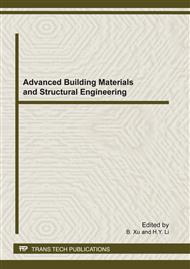p.421
p.425
p.429
p.435
p.440
p.444
p.448
p.453
p.457
Assimlable Organic Carbon (AOC) Criteria to Control Bactrium Regrowth in Drinking Water Distribution System
Abstract:
Relation between AOC concentration and bacterium regrowth in drinking water network was investigated to obtain biostability criteria. Comparably obvious linear relationship was found between the maximum HPC and the maximum content of AOC of the distribution system. By extrapolation of the line,HPC would decline to 0 when AOC was 57µg/L. That result showed that substrates cannot support bacterium growth when AOC was less than 57µg/L. Similar obvious linear relationship was also derived between the maximum AOC content and the maximum AOC consumption (∆AOC) of the distribution system. AOC consumption (∆AOC) would decline to 0 when AOC content was 43.8µg/L. it also showed that bacteria cannot growth and AOC do not be utilized when AOC was less than 43.8µg/L. Some researchers had proposed biostability criterias, i.e. Van der Kooij’s criteria of 10µg/L and LeChevallier’s criteria of 50~100µg/L. We proposed that the biostability criteria under chlorine disinfection was AOC <40µg/L.
Info:
Periodical:
Pages:
440-443
Citation:
Online since:
February 2012
Authors:
Price:
Сopyright:
© 2012 Trans Tech Publications Ltd. All Rights Reserved
Share:
Citation:


